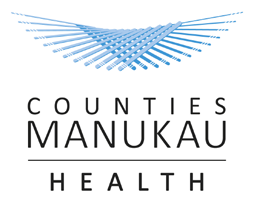
09 November 2017
Health Sector Workers Network
E-mail:
[email address]
To whom it may concern,
Official Information Act Request 1982
I write in response to your Official Information Act Request dated 11 October. You requested the
following information:
•
What are the percentages of patients presenting to the Emergency Departments that were
admitted, discharged, or transferred within six hours of presentation, for each month of the year
June 2016 to June 2017?
Table 1 shows the results for CM Health for the 12 months from July 2016 to June 2017 on the national
health target of 95% of patients presenting in Emergency Departments are admitted, discharged, or
transferred within 6 hours.
Table 1: Six-hour rule percentage pass
by month for Middlemore Emergency Dept.
Month
% Pass
Jul-16
96%
Aug-16
96%
Sep-16
96%
Oct-16
96%
Nov-16
95%
Dec-16
95%
Jan-17
95%
Feb-17
94%
Mar-17
95%
Apr-17
93%
May-17
93%
Jun-17
91%
Total Year result
95%
Results are for presentations as per MOH ‘six-hour’ rules. Therefore,
this excludes self-discharges, and people sent from ED triage straight to
a short-stay areas.
Counties Manukau District Health Board
19 Lambie Drive, Manukau, Auckland 2104 | Private Bag 94052, Manukau, Auckland 2241
T: 09 276 0000 | cmdhb.org.nz
•
Please provide any DHB policy concerning guidelines and use of the ED observation unit?
By “ED Observation unit,” we are referring to the usage defined by the Ministry of Health in the
paper “Streaming and the use of Emergency Department Observation Units and Inpatient
Assessment Units.”
At CM Health (Middlemore Hospital), there are three distinct areas of short-stay areas within the
Emergency Care Department. These are ED Short-Stay Area, Surgical Short-Stay, and Paediatric Short-
Stay. There is also a Medical Assessment Unit.
The Emergency Department does not have policies for each short-stay area; the Ministry of Health
guidelines provide consistent and explicit guidance. These units enable flexibility of response to
Emergency Care demand.
The Middlemore Hospital Emergency Department is one of the busiest in Australasia, seeing in excess
of 115,000 presentations per year. Caution should be used in comparing data with smaller hospitals in
New Zealand.
Attached (
Appendix 1) is a copy of the staff guideline pertaining to use of the Emergency Department
Short Stay Area. Operationally, our Emergency Care Department expect the fol owing allocation
criteria to apply:
Emergency Department Short Stay Area
− Seen by Medical Specialist in Emergency Care, with a written on-going plan of care, use for
observation, and to determine next steps in care.
− 90% of patients likely to be discharged with 12-24 hours
Surgical short-stay (SAU)
This is mix of short-stay and surgical assessment patients (a combined unit), designed to be short-stay
requirements, not for inpatients
− Referred directly to Surgical Service / Specialist from Primary Care, if stable, (i.e. triage category 3 -
5), with a written on-going plan for care. Can also be referred by Emergency Care Specialist to SAU,
− High likelihood that patient will discharge in less than 28 hours, and discharge by 11:00 am.
Paediatric short-stay
− Can be admitted by all Paediatric specialities, including those in Emergency Department,
− Stay will be less than 12 hours, or they are admitted to an inpatient paediatric wards.
•
What percentage of total ED presentations for each month of the year June 2016 to June 2017
utilised the ED Observation unit?
The ‘Emergency Department Observation Units’ refer to the ‘ED short-stay - adults’ and ‘Paediatric
short-stay’ by Middlemore hospital staff. As shown in
Table 2, just over a quarter of all Emergency
Department patients went to these areas.
Page 2
Table 2: Percentage of people using Observation
Units as a percentage of al ED presentations
Month
% Using Obs Unit
Jul-16
28%
Aug-16
27%
Sep-16
27%
Oct-16
26%
Nov-16
28%
Dec-16
28%
Jan-17
26%
Feb-17
28%
Mar-17
29%
Apr-17
28%
May-17
28%
Jun-17
26%
Total Year
27%
Excludes people sent from triage straight to a short
stay area.
•
What percentage of patients utilising the ED observation unit were discharged home from this
location for each month of the year June 2016 to June 2017?
As shown in
Table 3, just over 60% of patients who go to Emergency Department observation unit are
discharged home directly from the Emergency Department Observation Units.
Table 3: percentage discharged home direct from
Observation Unit
Month
% Discharged Home
Jul-16
67%
Aug-16
60%
Sep-16
64%
Oct-16
63%
Nov-16
62%
Dec-16
61%
Jan-17
62%
Feb-17
59%
Mar-17
59%
Apr-17
59%
May-17
59%
Jun-17
59%
Total Year
61%
Page 3

•
What is your DHB’s expected length of stay for the patients utilising the ED observation unit?
The intention is that these areas are used for patients with an expected duration of stay of 12 hours,
but up to a maximum of 24 hours. Certain patient groups may remain in the ED Observation Unit
beyond this time for multiple reasons, including awaiting a suitable bed within acute inpatient wards.
•
What percentage of patients for each month of the year June 2016 to June 2017 exceeding the
length of stay given in question 5?
The median value for length of stay in the ED Observation Units was 242 minutes. For people who
spent a part of the ED stay in ED Observation Units, the median value for the
entire Emergency
Department stay was 482 minutes (8 hours).
While just over half (the median) of our patients stay more than the median value of 242 minutes (4
hours) in the ED Observation Units, more than 90% are in any part of the ED for less than 6 hours. We
believe that less than 1-2% of patients stay in the ED Short Stay for more than the expected 12 hours.
This is primarily determined by clinical considerations for their particular care.
I trust this satisfactorily answers your request.
Yours sincerely
Gloria Johnson
Chief Executive (Acting)
Page 4

